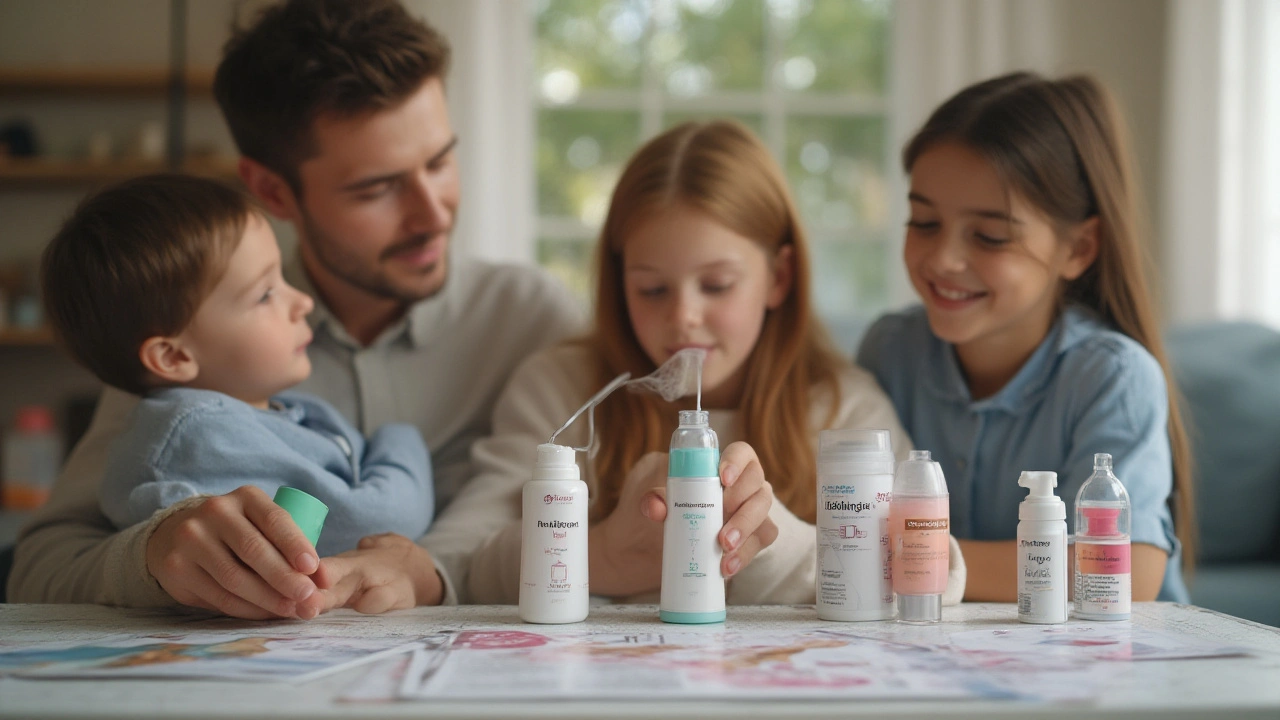Nebulizer solutions — what to use and when
Needing a clear, practical guide to nebulizer solutions? Good — this page cuts through the noise. Nebulizers turn liquid medication into a mist you can inhale. The right solution depends on your condition, age, and the device you use. Below I’ll walk you through the common options, how to use them safely, and how to avoid common mistakes.
Types of nebulizer solutions
Saline (0.9% isotonic): This is the most basic option. Isotonic saline hydrates airways, loosens mucus, and is safe for babies and adults. Doctors often recommend it for simple cough, mild congestion, and to help clear secretions.
Hypertonic saline (3% or 7%): This stronger salt solution helps pull water into thick mucus, making it easier to cough out. It’s usually used under medical advice for conditions like cystic fibrosis or bronchiectasis. Expect a brief cough or mild irritation when you first use it.
Bronchodilators (e.g., albuterol/salbutamol): These relax airway muscles and ease wheeze and breathlessness. They’re common for asthma and COPD. Dosage matters — you must follow the prescription and device instructions.
Anticholinergics (e.g., ipratropium): Often combined with bronchodilators to open airways further. Used for COPD and some severe asthma cases. These are prescription-only in most places.
Steroid suspensions (e.g., budesonide): These reduce airway inflammation when inhaled regularly. They require strict dosing and are not for immediate relief of sudden breathing problems.
Antibiotic or mucolytic solutions: Occasionally prescribed for stubborn infections or very thick secretions. These are specific to the problem and need a doctor’s order.
Safe use, storage, and buying tips
Always follow a prescription for medicated solutions. Over-the-counter saline is fine for routine use, but prescription meds need a doctor’s directions. Don’t mix medications in the nebulizer cup unless a clinician tells you to — mixing can change how the drugs work or cause irritation.
Check compatibility: Not every medication works with every nebulizer. Some ultrasonic devices can damage suspensions. Use the device type recommended by your provider or the medication leaflet.
Storage matters: Most solutions should be kept sealed and used within the expiry date. Once opened or mixed, many meds need to be used immediately and not stored for later.
Hygiene and maintenance: Clean the nebulizer parts after each use, follow the manufacturer’s steps, and replace tubing and cups as advised. Dirty equipment raises infection risk and reduces drug delivery.
Buying online: Only use reputable pharmacies. Prescription meds require a valid prescription. If you’re unsure about suppliers, ask your clinic for reputable pharmacy recommendations.
If breathing suddenly worsens, or you get new chest pain or high fever, seek urgent care. Nebulizers help many people breathe easier, but using the right solution the right way is the key. If you want, I can point you to articles on specific meds or how to pick a nebulizer device.

